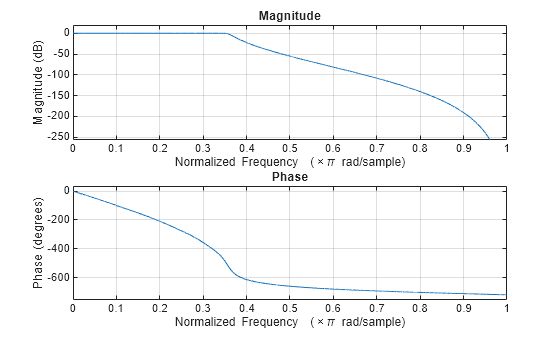digitalFilter
Digital filter
The Coefficients property has been replaced by the
Numerator and Denominator properties. For more
information, see Version History.
Description
Use designfilt to design and edit
digitalFilter objects.
Use
designfiltin the formd = designfilt(resp,Name,Value)to design a digital filterdwith response typeresp. Customize the filter using name-value arguments.Use
designfiltin the formdesignfilt(d)to edit an existing filter,d.Note
This is the only way to edit an existing
digitalFilterobject. Its properties are otherwise read-only.Use
filterin the formdataOut = filter(d,dataIn)to filter a signal with adigitalFilterd. The input can be a double- or single-precision vector. It can also be a matrix with as many columns as there are input channels. You can also use thefiltfiltandfftfiltfunctions withdigitalFilterobjects.Use Filter Analyzer to visualize a
digitalFilter.
Properties
Object Functions
Examples
More About
References
[1] Lyons, Richard G. Understanding Digital Signal Processing. Upper Saddle River, NJ: Prentice Hall, 2004.
Version History
Introduced in R2014aSee Also
Live Editor Tasks
Apps
Objects
Functions
bandpass|bandstop|highpass|lowpass|designfilt|double|ctffilt|fftfilt|filt2block|filter|filtfilt|filtord|firtype|freqz|grpdelay|impz|impzlength|info|isallpass|isdouble|isfir|islinphase|ismaxphase|isminphase|issingle|isstable|phasedelay|phasez|single|ss|stepz|tf|zerophase|zpk|zplane
